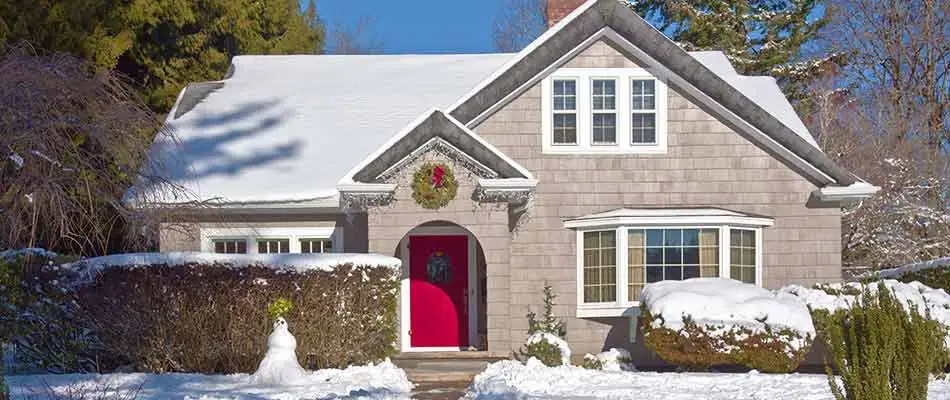Spring landscape mulching is a common activity throughout the country for landscaping beds. Mulching during this time adds beautification to your landscape beds, while also providing the added benefits of weed control, moisture retention, and temperature control.
Mulching is one of the most beneficial landscaping practices that both protects and enhances your property. In areas such as Portland, OR winter mulching is necessary for protection against the winter freeze-thaw pattern that occurs.
What happens to the ground in Portland, OR in the winter and how does mulching help?
In the northern regions, winters can be extremely harsh, with fluctuating temperatures that cause the ground to freeze, thaw, and then freeze again repeatedly throughout the cold season. This cycle can damage the roots of your plants.
Mulching keeps the ground frozen by blocking out the sunlight and helps keep temperatures below ground consistent. This prevents your plants from growing during a warm spell that may happen during the winter. Mulching also helps keep moisture underground, so consistent watering until the first frost is imperative to help the roots of your plants stay hydrated throughout the winter.
The Best & Most Common Materials for Winter Mulching
There are a number of materials available for your winter mulching needs in Portland, OR. It is important to remember that aesthetics are not important in the dead of winter--you are simply looking to mulch for protecting the plant life in your landscaping beds.
Shredded mulch, straw, and pine needles are great options for mulching. Shredded leaves are also an easy and viable option. Organic mulches that will decompose and settle over time are going to be the best choices for easy spring cleanup. Some of the most commonly used mulches for winter mulching include:
- Bark chips
- Shells from walnuts, pecans, filberts, and other similar nuts
- Pine needles
- Evergreen branches
- Hay
- Shredded leaves
- Straw
Mulches that are coarse, provide insulation and allow water and airflow are the mulches you want to look for when you go to lay your winter mulch.
Steps for Mulching Your Landscape This Winter
Remember, mulching in the winter is strictly for covering your plants from the fluctuating freezing weather and beautification can be left for spring mulching. Wait until the first hard frost to begin your mulching. In Portland, OR, a good rule of thumb is to start when the temperatures drop to at least 28°F.
Step 1: Select your mulch.
There is a number of different mulch types to select from, as previously mentioned, including hay, pine needles, and bark chips to name a few.
Step 2: Prepare your landscaping beds.
Pull any leftover weeds. Add fertilizer to your soil if you have not done so already. Check the edges and borders of your landscaping beds to make sure they are in good condition.
Step 3: Do pruning during the dormancy period.
Pruning plants during the winter or dormancy period are the best time for them. If you have plants that can be pruned at this time, it is best to do it prior to mulching.
Step 4: Spread mulch to completely cover your landscape beds.
Apply at least 2-4 inches of mulch across your landscaping beds. Thicker materials, such as straw or bark chips can be applied to a depth of 3-6 inches. You want the area completely covered to protect all of your plants.
Keep in mind while you are laying your mulch that it should be about 1-2 inches away from plants and 6-12 inches away from tree bases.
Call our professionals to handle your mulching in the winter.
We offer professional and viable mulch options for your winter mulching needs. You can reach out to J&C Lawn Care at (971) 284-2035to handle your mulching this winter. Do not let your plants die off when just an extra layer of protection can make all the difference!



Comments (0)
Thanks for your comment!
Thanks for your feedback! Your comments have been successfully submitted! Please note, all comments require admin approval prior to display.
Error submitting comment!
There is a problem with your comment, please see below and try again.